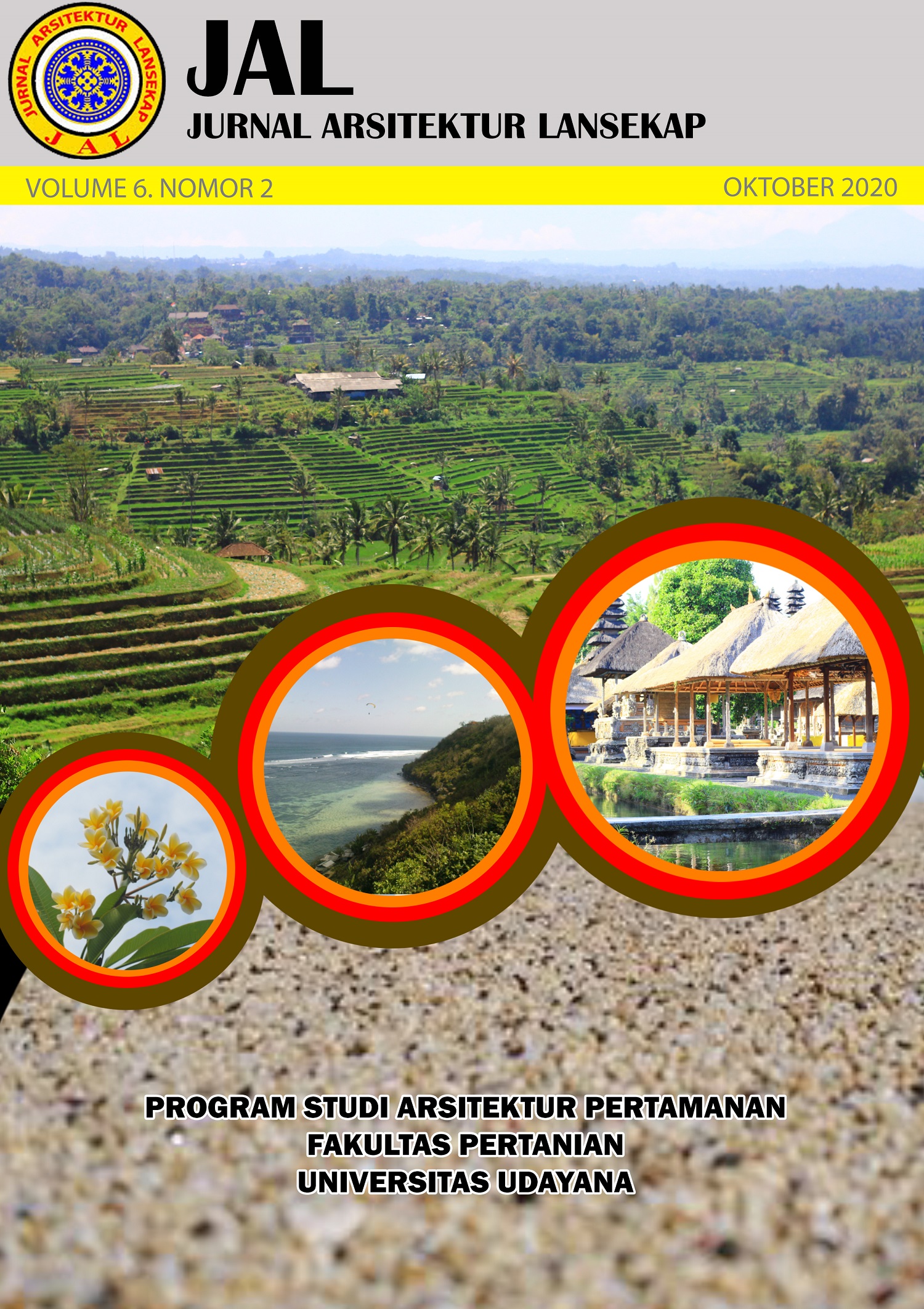Identifikasi suhu permukaan terhadap penutupan lahan dari Landsat 8: studi kasus Kota Denpasar
Abstract
The variation of land surface temperature using Landsat 8, case study City of Denpasar. Land cover is an essential signature that is often used to understand interactions between local temperatures and land surfaces. The integration of remote sensing and geographical information system helps to effectively and efficiently extract data for a vast study area. The purpose of this study was to determine the range and distribution of Land Surface Temperature (LST) and the variation among land covers in City of Denpasar using Landsat 8. The City of Denpasar was selected as the representative study area where human population considerably increased high during past decade and thus, has posed a need to understand urban climates mainly for a city which located in a relatively small tropical island. This study shows that trees in mangrove, urban water areas, and paddy fields had lower LST and can be used as an effective means of offsetting the energy-intensive urban heat island effect.
Downloads
References
Asmiwyati I.G.A.A.R. Sugianthara A.A.G., Wardi IN. 2017. Detection of vegetation cover in Denpasar using satellite imagery of Sentinel. International Conference on Science, Technology and Humanities V Tanggal 24 Oktober 2018. Denpasar
BMKG. 2018. Analisis curah hujan dan sifat hujan Bulan Maret 2018. Available online at https://www.bmkg.go.id (diakses pada 1 Juni 2019).
Elmes, A., Rogan, J., Williams, C., Ratick, S., Nowak, D., and Martin, D. 2017. Effects of urban tree canopy loss on land surface temperature magnitude and timing. ISPRS Journal of Photogrammetry and Remote Sensing 128:338-353.
Gupta, N., Mathew A., and Khandelwal S. 2019. Analysis of cooling effect of water bodies on land surface temperature in nearby region: A case study of Ahmedabad and Chandigarh cities in India. The Egyptian Journal of Remote Sensing and Space Science Volume 22, Issue 1, April 2019, Pages 81-93.
NASA. 2011. Landsat 7 Science Data Users Handbook Landsat Project Science Office at NASA’s Goddard Space Flight Center in Greenbelt, 186. Available online at
http://landsathandbook.gsfc.nasa.gov/pdfs/Landsat7_Handbook.pdf. (diakses pada 21 Juni 2018).
Solecki, W.D.W., Rosenzweig, C., Parshall, L., Pope, G., Clark, M., Cox, J., Wiencke, M., 2005. Mitigation of the heat island effect in urban New Jersey. Environ. Hazards 6, 39–49.
Taha, H., Hammer, H., & Akbari, H. (2002). Meteorological and air quality impacts of increased urban surface albedo and vegetative cover in the Greater Toronto Area, Canada. Lawrence Berkeley National Laboratory Report No. LBNL-49210, Berkeley, CA.
USGS. 2018. Landsat 8 data users handbook. Available online at https://www.usgs.gov/landresources/nli/landsat (diakses pada 21 Oktober 2018).
Voogt, J. A.& Oke,T .R. 2003. Thermal Remote ensing of urban climates. Remote Sensing Environment. 86,370-384.
An author who publishes in the Jurnal Arsitektur Lansekap (JAL) agrees to the following terms:
- Author retains the copyright and grants the journal the right of first publication of the work simultaneously licensed under the Creative Commons Attribution-ShareAlike 4.0 License that allows others to share the work with an acknowledgement of the work's authorship and initial publication in this journal
- Author is able to enter into separate, additional contractual arrangements for the non-exclusive distribution of the journal's published version of the work (e.g., post it to an institutional repository or publish it in a book) with the acknowledgement of its initial publication in this journal.
- Author is permitted and encouraged to post his/her work online (e.g., in institutional repositories or on their website) prior to and during the submission process, as it can lead to productive exchanges, as well as earlier and greater citation of the published work (See The Effect of Open Access).
Read more about the Creative Commons Attribution-ShareAlike 4.0 Licence here: https://creativecommons.org/licenses/by-sa/4.0/.







